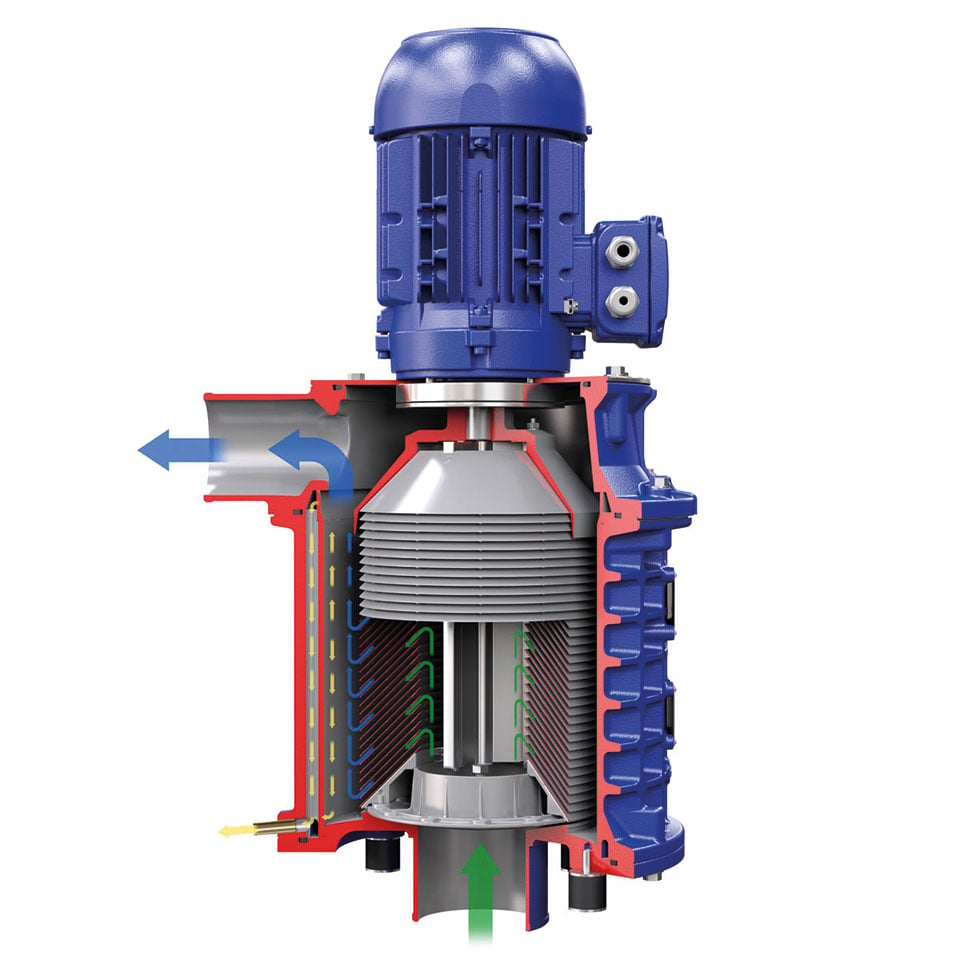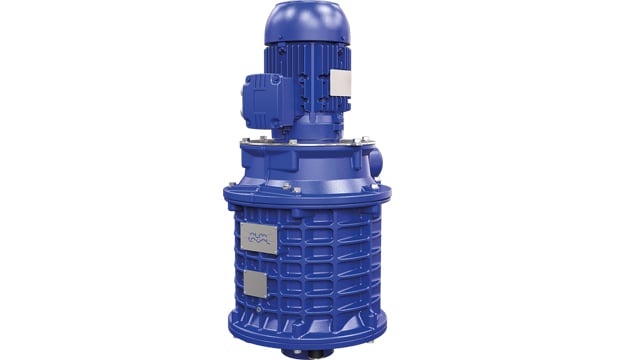PureVent
Reduce environmental and health risks with the Alfa Laval PureVent 2.0 centrifugal oil mist separator. It removes up to 99.9% of oil from crankcase gases.
Outstanding cleaning efficiency
- Performance can’t be matched by traditional cyclones, air traps or filters
- Recovered oil can be re-circulated to the oil sump and used for engine lubrication
- 16000 hours service intervals eliminate the frequent maintenance requirements associated with filter replacement
How it works
PureVent 2.0 uses high-speed centrifugation to remove oil mist, soot and unburned fuel from crankcase gas.
The separator unit has a stack of 185 rotating discs made from lightweight polymer. Crankcase gas enters at the bottom and passes into the disc stack. Centrifugal force presses oil and soot out. This leaves air virtually oil-free, so you can responsibly release it into the atmosphere.
For additional environmental benefits, collected oil can be recirculated through the separator and used again in the engine lubrication system. It can also be drained for use in shipboard incinerators or stored for disposal.
Select your ideal design
- Open design – releases oil-free crankcase gas directly into the atmosphere
- Closed design – re-circulates clean gas to the turbocharger, eliminating all crankcase emissions and the risk of turbocharger fouling

Watch how PureVent cleans crankcase gas from diesel engines
Watch how PureVent cleans crankcase gas onboard vessels
Capturing oil mist from the engine crankcase is a clean win for EPASA
Centrais Elétricas de Paraíba, or EPASA,is the owner of two diesel power plants near João Pessoa, a coastal city at Brazil’s eastern tip. With a total installed capacity of around 340 MW, the plants form one of the largest thermoelectric power facilities in the region. EPASA keeps a watchful eye on their environmental impact and operating efficiency, and this was the reason for installing 40 units of Alfa Laval PureVent 2.0. With this unique air separator, the plants have eliminated an oily environment and reduced lube oil consumption.

